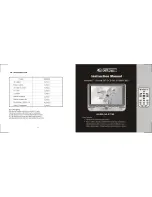
50 Hz: G625 - G690 - G750XW/XF
OPERATION & MAINTENANCE MANUAL
96
60 Hz: G655 - G750 - G800 - G850XW/XF
DRAW-OUT AND INSERTION OPERATION
GENERAL
The draw-out type ACB consists of the breaker body and the draw-out cradle. The main and control circuit terminals are
installed on the draw-out cradle, which permits you to draw out and inspect or service the breaker body without the need
for removing wiring from the terminals.
The draw-out mechanism allows you to move the breaker body to any of the four positions as shown in Fig. 28. The
switchboard panel door can be shut with the breaker body drawn out to the CONN., TEST or ISOLATED position.
• Operation Durability
The AR series ACBs are designed to ensure the operation durability of 100 draw-out and insertion cycles in conformance
to IEC 60947-1 and JIS C8201-2 (one cycle means that the breaker body is drawn out from the CONN. position to the
Removed position and inserted back to the CONN. position). Draw-out and insertion operation of more than 100 cycles
could abrade the main circuit contacts, resulting in an overheat of the contacts during energization.
1. CONN. position
Position indicator
4. Removed position
Position indicator
2. TEST position
Position indicator
3. ISOLATED position
Position indicator
Draw-out
cradle
Draw-out rail
Rollers
Draw-out
Draw-out
Insert
Insert
Insert
Draw-out
Control circuit
contact
Breaker body
In this position, the main circuit and the control
circuits of the ACB are connected to the external
circuits for normal service.
The breaker body is removed from the draw-out
cradle.
In this position, the main circuit is isolated, and the
control circuits are connected. The ACB can be
tested with the switchboard panel door closed.
In this position, both the main and control circuits
are isolated, and the ACB is completely
de-energized. The switchboard panel door can be
closed.
Main circuit
contact
Fig. 28 Positions of breaker body in draw-out cradle











































